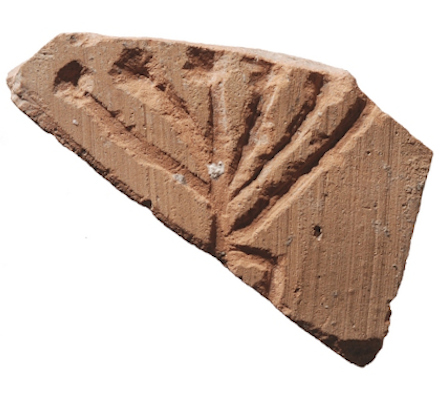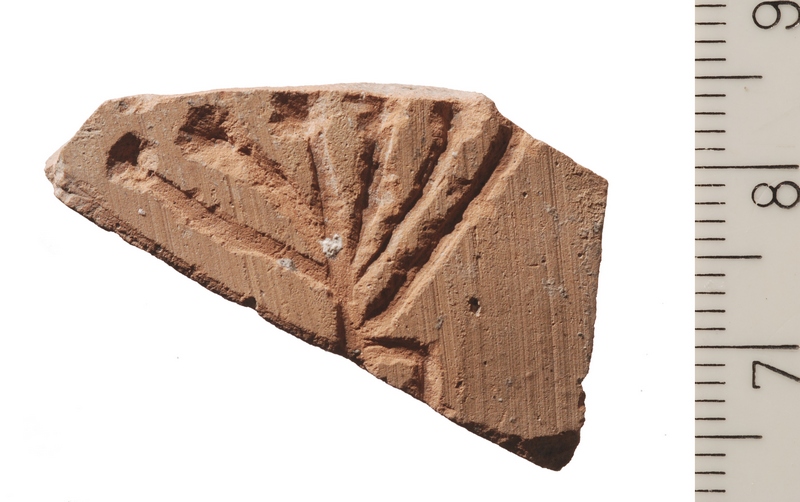A Potsherd from the Temple Mount with an Incision that Resembles the Temple Menorah
Want to help decipher an archaeological mystery?
A very interesting incised design appears on an ancient potsherd found in the sifting of the soil from the Temple Mount . Is it the Temple Menorah? Some kind of floral design? Something else? How can we date this potsherd? When was the incision done? By whom and for what purpose?
If it is a menorah, what can we learn from this artifact?
All these questions are currently being debated by the archaeologists studying this potsherd.
We welcome your suggestions…
Discover more from The Temple Mount Sifting Project
Subscribe to get the latest posts sent to your email.







Pretty sure its a Menorah, stylized angularly. Or perhaps some ancient Menorahs looked like this
I thought it looked like Menorah but it only has six lines.
The menorah only had 6 branches and one stem. Making 7 lights total, not to be confused with the Menorah lit on Chanukah which has 9 total lights.
It looks like a palm or fern.
Looks like a dandelion seed. Valuable source of food and medicine and possibly to make wine and beer.
Hyssop?http://spheresoflight.com.au/axismundi/content/images/hyssop3.jpg
Rotate 90′ to the right, and it looks like it might be a stick-figure representation of someone blowing a multi-headed trumpet. The right-angle crook would be the arm holding the horn(s). The full image may have implied many people in rank blowing trumps, like you see in many older paintings.
Would help if we knew if there was any indication as to what the “correct” orientation of the piece is, if that’s even possible.
This is a crude depiction of the temple mount Menorah as described by the Rambam/Maimonides. The sign was more then likely as a decoration and therefore isn’t very detailed and is missing the cups the Rambam describes. His opinion is that the Menorah had straight branches and that the Menorah depicted on Titus’s’ arch was actually just a candelabra possibly from the Women’s section.
I see an Olive Tree with 5 branches that, from the viewer’s perspective, is standing to the left of what appears to be a simple depiction of a house. Notice what might be an angled roof line, eave, and partial wall on the right of the potsherd.
This could also be a depiction of a five branched Menorah to follow tradition of the time as I’ve read recently that rabbis prevented making seven branched Menorahs like the one in the temple. It could also be artistic license.
http://www.biblicalarchaeology.org/daily/biblical-sites-places/temple-at-jerusalem/understanding-the-jewish-menorah/
Nevertheless, this is in line with the premise that this may have been part of a simple artistic depiction of the two witnesses of Revelation/Zechariah. In other words, I can see this potsherd being the left hand side of a larger image interpreting the two Olive Trees (or perhaps two Lampstands) standing before the Lord/God of the earth. The artistic image to have in mind is something similar to an Olive Tree (or Menorah) standing on the left AND right of the house of God from the viewer’s perspective.
The below is a discussion of the many interpretations regarding the witnesses. This is one of many including the imagery of the Olive Trees. I’ll leave any further interpretations to each reader.
http://endtimepilgrim.org/twowit.htm
Interestingly, from this perspective, the fact that this potsherd has been uncovered is amazing to me. And what we may be viewing (from my own personal perspective) is the depiction of this concept with Jesus Christ if full view – who, from a Biblical perspective, sits at the right hand of the Father.
Looks like a Hebrew letter from Ruth 3:11. – And now, my daughter, fear not: all that thou sayest I shall do to thee, for it is on all hands known in the gate of my people that thou art a truly capable woman. The word חָיִל in the expression אֵשֶׁת ךחיִל has no synonym in English, is understood as capable and heroic, virtuous.
As you go down the bottom angle of the item, at the bottom of the vertical incision, there is an incised line at 90°out about 3 mm then down. If the design is some sort of plant, that bottom form could represent a planter of some sort. If, as some assume, it is a Temple Menorah then wouldn’t the design show an horizontal bar to which the stems then go up instead of six (visible) appendages? The main question that I believe should be the main focus is: in the Torah, is there mention of a design similar to this that would have been on an earthen vessel or, being possibly dating c. 300-1450, is there history, written or traditional, that could explain a ceremonial vessel from even the early Christian church? As far as seeing a two dimensional image I can only speculate whether the pie is flat or has a slight curved surface. My best wishes to you in solving this mystery.
It appears to be a palm leaf held over the right shoulder of a person whose forehead and eyes are visible on the slanted broken edge.
Hi, if it’s not a menorah, maybe instead it could be a type of whip that was used to punish prisoners as they did with some of the apostles?
It is an apothecary pottery sign..showing the type of Medicine or herbal remedy inside the medicine pot. This looks to be False Queen Anns lace..i.e greater Ammi ( Ammi magus)..This was used for psoriasis or some sort of skin condition remedy. Or to treat vitiligo..Or it could be Cumin or dill. The shard sign is an identification of this herb or remedy…Thanks for allowing us to possibly help…
It looks to me like a person’s motion bending over at the knees praying.
Could be at this point it’s a Archeologically Rorschach test. But pots were created to hold things and very often even today symbols related to what they made to hold are put on them. I’ve seen sugar jars with bee’s and beehives painted on them. Flour Jars with pictures of bread. Tea jars with Tea leaves or Tea cups painted on them. Since Dates and Date sugar were stable products it kind of makes a logical sense that it would be a picture related to what the jar was made to hold.
It looks like it could be the top half a Judaian Date Palm tree. https://upload.wikimedia.org/wikipedia/commons/b/ba/Sestertius_-_Vespasiano_-_Iudaea_Capta-RIC_0424.jpg. You can see a similar design on that coin and here https://tomverenna.files.wordpress.com/2011/09/image34.jpg?w=468.
dill or mustard plant?
it looks very similar to another one that’s online that produces a wax stamp.
http://40.media.tumblr.com/a3855ede207c6fbaeeeba7c08797671d/tumblr_inline_nxrdjdGCvF1sfjjkp_1280.jpg
there’s the stamp there very similar
http://www.israelnationalnews.com/static/Resizer.ashx/news/250/168/314796.jpg
wrong orientation? looks like its done on a potters wheel,? so the lines should go around the pot not up and down? Guess right 90 degrees, done by a right handed person as the far left line has a kink in at which would happen if right handed
Can it be Jerusalem Sage which has “flowers” that look like a menorah?
They look like stylized trees I’ve seen on seals from Dilmun. Since I’m sure there was a fair bit of trade going on, that option might be worth looking at.